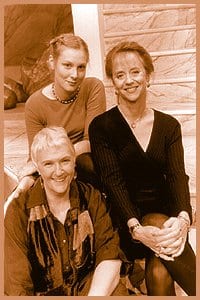Historical fiction was one of the staples of my adolescent reading diet. Big, fat epic-length books by old lady writers – the writers were old ladies and the books were written for old ladies and me. I loved those books because of their pseudo-educational aura and of course, their irresistibly melodramatic nature. I didn’t waste a second thinking about historical accuracy; it was all about story and triumphant endings.
Those days are long gone and it’s impossible to read historical fiction without wondering about the reality factor. Some writers, like Sarah Waters, get around the issue by making their books sound like books written in the period they are writing about and that produces a convincing effect. Others do lots of research and fill the narrative with details that are historically grounding. Toronto writer John Miller’s first novel The Featherbed falls into the second category. Miller offers a thoroughly researched story set in New York City in the early decades of the 20th century.
The novel begins in 1983 with the death of Rebecca at 90, mother of Anna and Sadie – which brings the sisters together after a long separation. Fifty years ago, Sadie had left home abruptly and was disowned by her parents. The reasons for this estrangement are shrouded in mystery and Sadie’s disappearance is a source of great resentment for Anna. As the sisters clean their mother’s apartment, Miller invokes the device of the found diary to tell the story of Rebecca’s early life.
But he doesn’t just present the diary, he uses it as a point of entry to the world of the past and shifts to a first-person narrative voice to fill in the details. It’s like a flashback in a movie that begins with a voiceover and then presents an episode from the past. The past is that of eastern European Jewish immigrants to North America, struggling in New York as garment workers, as fishmongers, as prostitutes, living in cramped tenements, walking garbage-filled streets in 1911. The details are certainly vivid, and no doubt well researched.
The problem with the book is in the structure. As the sisters read the diary it becomes clear that we’re headed for big revelations about deep family secrets – that’s what diaries are for, after all. But there’s nothing special in the revelations themselves. There’s drama of course, particularly when it becomes clear that Sadie is not Rebecca’s child after all and the circumstances surrounding her birth are disclosed. It’s a classic example of too much going on without enough meaning associated with all the action.
Because of the shifts back and forth in time, with the emphasis being placed on the past, it’s much harder to connect with the characters of the sisters. They are not fully realized, and given the details of their early life together it’s hard to understand why they find the past so mysterious. They both had good reason to hate their father and Anna in particular knew a lot about the abuse he inflicted on their mother. Yet she acts surprised to read about such things in her mother’s diary. The narrative is not emotionally coherent and this undermines the powerful effect that Miller is trying very hard to create.
There is an everything-but-the-kitchen-sink feel to this novel; it’s packed with all sorts of things – early trade union history, immigrant politics, Jewish culture, illegal abortions, child abuse, rum running, poverty before and after the Depression, domestic abuse and a little touch of homosexuality and sad lesbian love story as well. These elements are obviously drawn from life and history, but fiction demands an artful arrangement to restore them to life – that life is missing in this novel.
Everyone is an armchair editor at times, and in the case of The Featherbed, it’s hard to resist that tendency. There’s some great stuff in the novel and Miller clearly wants to work a large canvas. At times it works because the minor characters are really well drawn. But this is a classic example of book that needs some fine tuning. It’s not enough to lay out the details, they need to be filled with meaning as well.

 Why you can trust Xtra
Why you can trust Xtra


